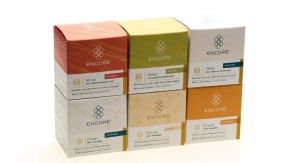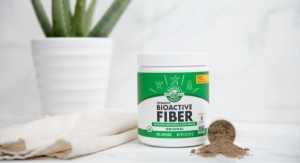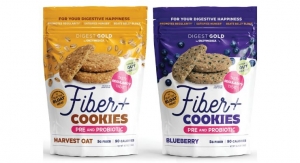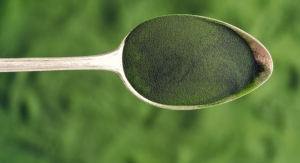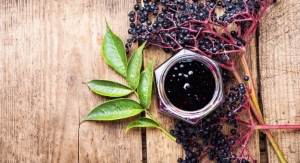Mark Crawford04.01.10
Dietary fiber was once simply viewed as cellulosic plant constituents and psyllium with one major benefit—regularity. Today this category covers a wide range of other natural materials, including soluble and insoluble fibers derived from fruits, vegetables, beans, whole grains and even spices like fenugreek.
“The biggest change in terms of fiber is now the sheer number and diversity in sources,” said Neelesh Varde, business development project coordinator with Roquette America, Geneva, IL. “We now have a large number of fibers with varying properties, both in terms of functionality and nutrition. The net benefit for companies looking to add fiber is that they now have a bigger ‘toolbox’ to play around with, and consumers benefit with better taste and enhanced nutrition.”
One reason for the increasing trend toward variety is that consumers are becoming more informed about the foods they eat. “They are more demanding about the origin and the quality of the products they consume and are paying more attention to what the industry offers, as well as traceability and quality of the ingredients,” said Catherine Lecareux, communications manager for Colloides Naturels Internationals (CNI), Rouen Cedex, France.
Her observation is backed up by statistical data. According to the U.S. Department of Agriculture (USDA), dietary fiber information is the only labeling component that has seen increased use by U.S. consumers during the past decade. Similarly, a 2008 survey conducted by the International Food Information Council Foundation (IFIC), Washington, D.C., reported that consumers were increasingly focused on fiber and whole grains. When asked what aspects of the nutrition facts label they consulted, 52% of respondents indicated fiber content—up from 42% in 2006. Some market experts predict that by 2011 the demand for foods containing beneficial dietary fiber will more than double to $470 million.
Tate & Lyle, Decatur, IL, conducts market research in the area of consumer wellness. In its most recent research, the company uncovered three key fiber trends. First, consumer comfort with the taste of added fiber in products is increasing. “We found that 39% of American consumers believe foods and beverages with fiber can taste good, an increase of 16% versus two years ago,” said Pashen Black, marketing communications manager.
Second, Tate & Lyle’s proprietary research revealed that 44% of consumers are actively reading food labels specifically for fiber and 66% are interested in fiber for their children. “Promitor Dietary Fiber can be used in numerous better-for-you children products—from fruit juices to cereal—to help children meet their daily fiber requirements in their favorite foods and beverages,” Ms. Black said. Finally, Tate & Lyle found that consumers are willing to pay an average of 5% more for products fortified with fiber.
Despite these advancements, however, only one in five Americans consumes the recommended daily amount of dietary fiber, which means the food industry and fiber companies still have a lot of work to do.
Beyond Traditional Fiber
Newer fiber materials (both soluble and insoluble) provide benefits beyond the traditional fiber concepts of basic digestive health. These include: cardiovascular health and immune system support, antioxidant benefits, regulation of normal blood sugar and blood lipid levels, sports and fitness nutrition, weight management, satiety and bone health.
“Sabinsa Corporation utilizes a range of ‘nutritional’ fibers extracted from plant food sources as dietary fiber supplements, such as Indian gooseberry fruits, cocoa beans, coconut endosperm, fenugreek, flax seeds and ginger rhizomes,” said Dr. Lakshmi Prakash, vice president of innovation and business development for Sabinsa Corporation, Piscataway, NJ.
Guar gum, acacia gum and pectin, which are derived from seed isolates, plant exudates and processed fruit byproducts, are excellent sources of soluble dietary fiber.
“Yet another category comprises the synthetic cellulose, ethers such as sodium carboxymethyl cellulose (CMC) and hydroxypropyl methyl cellulose (HPMC),” said Mike Weibel, vice president of research and development for Watson Inc., West Haven, CT. “Both categories of soluble fiber are water soluble and serve a variety of functions such as viscosity enhancement, emulsion stabilization and freeze/thaw protection.”
Inulin, a relative newcomer to the fiber category, is a low molecular weight oligosaccharide of fructose. Inulin is a soluble fiber that serves as an excellent source of carbohydrates for probiotic organisms populating the lower portion of the gastrointestinal system. “Dairy products with active cultures such as yogurt combined with inulin, and foods promoting inulin content, are growing as more consumers become aware of the benefits of probiotic maintenance,” Mr. Weibel added.
Research has shown fenugreek to be effective in increasing satiety. “Most of our recent studies are on dietary fiber and satiety,” said Joanne Slavin, professor of food science and nutrition at University of Minnesota in St. Paul, MN. “We found that different fibers have different effects on satiety. Eight grams of fenugreek fiber significantly increased satiety and reduced food intake at lunch, suggesting it may have short-term beneficial effects for obese individuals.”
Beta-glucan fiber is a type of soluble fiber found in grains like barley and oats, mushrooms and certain yeasts. “Barley-derived beta-glucans are molecules with a 1,3 and 1,4 linkage—the same linkages found in oats,” stated Hartley Pond, vice president of technical sales for VDF/FutureCeuticals, Momence, IL. “Because they have been clinically shown to help with cholesterol, blood glucose and insulin levels, they may reduce the risk of heart disease and diabetes.”
CNI incorporates acacia gum into many of its products. “Thanks to its high soluble fiber content (minimum of 90%), it has exceptional nutritional properties with documented health benefits, such as a prebiotic effect, high digestive tolerance and beneficial impact on glycemic index of the finished product,” said Ms. Lecareux. “Its low caloric value and noncariogenic properties also make it suitable for numerous functional food formulations, such as beverages, cereal bars and extruded products.” CNI has also developed a co-processed ingredient made from soluble acacia gum fiber and gluten-free insoluble wheat fiber that is specifically designed to mimic fat texture and reduce sugar content.
Yet another new ingredient of interest is Irvingia gabonensis, a West African plant that shows promise for helping people with diabetes or weight issues because of its high soluble and insoluble fiber content. “The soluble fiber derived from the seed delays stomach emptying, leading to a more gradual absorption of dietary sugar, which can reduce the elevation of blood sugar levels that is typical after a meal,” commented Steve Siegel, vice president, Ecuadorian Rainforest, LLC in Belleville, NJ. Like other soluble fibers, Irvingia gabonensis can lower blood cholesterol as well as other blood lipids by binding to bile acids in the gut and carrying them out of the body, a process that requires the body to convert more cholesterol into bile acids.
Prebiotics, which provide an indirect boost to the immune system by stimulating beneficial microflora, represent a growing niche within the fiber marketplace. “Consumers have learned that prebiotics can boost gut health, serving as the ‘food’ that positively stimulates probiotic bacteria in the gut,” said Bryan Rodriguez, technical marketing and scientific affairs manager for Lonza, Allendale, NJ.
As consumers learn more about the benefits of prebiotics, the demand for newer applications will continue to grow. “Prebiotics are increasingly added to new delivery systems in capsules, beverages, bars, yogurts and breads,” said Mr. Rodriguez. “Lonza, for example, incorporates an all-natural soluble prebiotic fiber composed of Larch arabinogalactan (LAG), which also retains moisture in baked goods and offers improved dough-handling characteristics. It is also stable at wide temperature and pH ranges and does not degrade, lose functionality or hydrolyze in beverages.”
New Product Developments
During the last several years an increasing number of “exotic” fiber sources have been introduced. “Some are worth investigating, such as sugar cane and chia fibers, while others are beyond common practical realm,” commented Jit Ang, executive vice president for International Fiber Corporation in North Tonawanda, NY. “Going back to fundamentals, there are very few true ‘new’ fibers. We may be able to extract, source and purify fibers from new sources, but the intrinsic properties of fibers remain the same. However, if new fibers are perceived to be more ‘sexy’ or exotic, and as a result this increases consumer awareness, and more importantly, the consumption of fiber as part of one’s daily diet, it is all for the good.”
Using new fiber sources, or increasing fiber levels in foods, must not come at the expense of taste, color, aroma or mouthfeel, however. Fiber ingredients continue to be technologically improved to provide excellent dissolution and taste characteristics, as well as blend easily with a variety of functional foods and beverages. Along these lines, companies are moving toward developing “invisible fiber” that food and beverage manufacturers can easily add into their recipes without much reformulation.
“This way consumers receive the benefits of nutrition without having to sacrifice taste or mouthfeel,” stated Roquette’s Mr. Varde. “For example, resistant dextrins from corn or wheat have a neutral taste, no sweetness and easily dissolve in water quickly without affecting the viscosity. There is a clear consumer pull for products with fiber, especially with newer fiber ingredients—thus we are likely to see more and more of food manufacturers incorporating fiber in non-traditional categories.”
Mr. Ang agrees. “Recent advances in fiber application technology (such as using functional cellulose in bakery products to increase specific volume and improve the sponginess of chemically leavened items) have opened up a new horizon to food scientists,” he said. “Today some fibers are used strictly as functional ingredients, at low levels where fiber claims are not legally possible. These can range from being used as a binder (water and fat), volume enhancer (sweet baked goods), rheological modifier (sauces), fat reducer (fried foods), etc. However, the evolution of how fibers can be utilized in foods has just started. It is a slow process—most food scientists need to be educated on the functional possibilities with fibers, as this is not taught in regular food science classes.”
Looking at recent new-product launches, nutrition bars (snack/cereal/energy) still lead in terms of sheer numbers. Two categories that are quickly growing are flavored waters and spoonable/drinkable yogurts. “With bottled water being commonplace, more and more people are turning to stick packs to add a bit of flavor, and increasingly, nutrition to their diets,” said Mr. Varde. “Recent innovations in soluble fibers (neutral taste, quick dissolution) allow for this use. Yogurts have also seen a surge with increasing focus and awareness of probiotics for digestive health.”
Researchers at United Arab Emirates University are exploring the possibility of using date fiber (a natural byproduct of processing dates into date syrup) as a dietary fiber additive in yogurt. The research team created five types of yogurt for testing: control yogurt with no date fiber, yogurt with 1.5% wheat bran, and three yogurts with 1.5%, 3% and 4.5%of date fiber, respectively. The samples were scored according to color, appearance, smoothness, sweetness, sourness, flavor and overall acceptance.
Results showed the date fiber did not alter lactobacilli counts or acidity; however, it did make the yogurt texture harder and stickier. Overall the tasting team gave the date fiber yogurts a low ranking for appearance, color and flavor. When rating overall acceptance, however, the 3% date fiber yogurt came closest to the control yogurt’s acceptance rate.
While fiber fortification was somewhat limited to bread and beverages in the past, new technologies have made it possible to fortify many other types of foods. A new marketing strategy is to deliver fiber through an entire food/meal, rather than a specific food item. For example, it is now possible to offer high-fiber pizza where fiber can be found in every component of the pizza, including the crust, sauce, cheese and meat topping.
“Adding small amounts of fibers to each component of the pizza allows for the development of good-tasting pizza components, as opposed to the easier and more direct traditional approach where all the fiber is added to the crust,” said Mr. Ang. “This concept is a lot more successful in delivering high-quality, good-tasting food products that do not resemble the cardboard-tasting high-fiber foods of yesteryears.”
Future Trends
There still exists a large gap between the current intake of dietary fiber and recommended intakes. “Because fiber is a shortfall nutrient, it is easy to justify adding it to foods or taking it as a supplement,” said University of Minnesota’s Ms. Slavin. “In general, intake is about half the recommended amount for most Americans, so there is a definite need for additional fiber. Furthermore, fiber intake is directly related to total food intake, which means consumers on low-calorie weight-loss diets are particularly susceptible to lack of dietary fiber.”
A potential high-growth niche is bran-enriched products. Cereal-based brans are high in dietary fiber and represent a natural source. “The baking industry has seen a substantial growth in whole grain-baked products as consumers become more informed about beneficial phytonutrients and fiber lost in the bran fraction during production of white flour,” said Watson’s Mr. Weibel. “Broad interest in bran fortification may be just around the corner. Many cereal grain-based products offer opportunities for bran fortification, including crackers, tortillas, baked snacks, pasta and sweet goods.”
Consumers will continue to become more enlightened about the many functional effects of fibers as a result of heavy marketing of these benefits to consumers. Digestive health is at the forefront of functional claims currently being utilized by food companies. “Over the last two years, 18% of launched products with an ‘added fiber’ claim also had some sort of functional digestive health claim,” said Roquette’s Mr. Varde. “A 2008 Datamonitor survey validated these launches, showing that 86% of surveyed consumers were aware of the link between fiber and digestive health.”
Reflecting an emerging trend, 11% of products launched with an ‘added fiber’ claim in the last two years also carried a weight control claim. “There is truly a need for products that help consumers effectively manage their weight,” said Mr. Varde. “With more clinical research into the role that fiber can play in this, we will see a satiety and weight management boom in the coming years.”
“From a labeling viewpoint, dietary fiber today is largely a numbers consideration, stressing content or amount and cost per serving,” said Mr. Weibel. “The nutritional industry optimally seeks an invisible form of fiber, particularly for product line extensions touting reduced fat and/or reduced caloric content. The objective is to incorporate fiber in sufficient quantity to support prominently displayed claims on the packaging, without perceptible changes in physical properties or cost of the product.”
As consumers become increasingly aware of the health benefits of fiber, and begin looking beyond whole grains for fiber content, most experts expect the demand for new, safe and effective fiber products from non-traditional food and non-food sources to continue to grow, along with convenient delivery systems.
Consumer education, however, is really the bottleneck to rapid growth, Mr. Varde pointed out. “For example, according to the Datamonitor survey, most consumers are aware of the relationship between fiber and digestive health, but less than half know about the link between prebiotic fiber and digestive health. This implies that a good segment of consumers still have the traditional view of fiber as a tool to keep themselves regular (or even as a laxative) and are unaware of recent health and nutrition advances in fiber. As consumers learn more about the different types of fiber, how they operate, and how they can positively affect numerous aspects of their health, we will see the corresponding growth in the marketplace,” he concluded.
About the author: Mark Crawford is a freelance writer based in Madison, WI. Armed with a science background, he writes about a variety of subjects, from manufacturing to discovery to commercialization to testing/verification to market performance. Personally, natural health is one of his favorite fields. He can be reached at mark.crawford@charter.net.
Different fibers offer different health benefits.
By Rhonda Witwer, Senior Business Development Manager, Nutrition National Starch Food Innovation
Recently, information about dietary fiber has exploded. The benefits of specific dietary fibers have expanded far beyond digestive health to include weight control, immunity and insulin sensitivity, among others. But fiber is not a homogeneous entity and its benefits depend on at least three mechanisms—bulking, viscosity and fermentation. One thing is clear: dietary fibers backed by strong scientific evidence are emerging as metabolism powerhouses, but it is crucial to differentiate between types of dietary fibers.
Fiber cannot be considered a generic category with generic benefits. Neither can we focus on the suggestion that fiber from natural sources may be somehow better than manufactured dietary fiber. We are going to need all the fiber we can get in order to double our intake from the current 14-17 grams/day to the current recommendations of 28-35 grams of dietary fiber/day (2005 Dietary Guidelines for Americans).
Historically, bulking fibers like cellulose from plant cell walls were the primary ingredients considered “dietary fiber.” It is now obvious, however, that many carbohydrates reach the large intestine and contribute to numerous health and wellness benefits. Consequently, the official dietary fiber definitions have recently broadened to include a wide range of carbohydrates.
A second major mechanism of dietary fiber is viscosity. Beta-glucan reduces the absorption of cholesterol because it thickens the contents of the intestinal tract, slowing cholesterol absorption and increasing bile acid excretion. Viscosity also delays the digestion of lipids and carbohydrates, which may trigger additional health benefits, including delayed stomach emptying, satiety and more.
The third major mechanism of dietary fiber is fermentation. Some, but not all, dietary fibers are fermented by bacteria in the large intestine. The mass of increased bacteria contributes to regularity and digestive health, but surprisingly, the short-chain fatty acids (SCFAs) produced by fermentation are turning out to be a key biochemical pathway for colon health and metabolism benefits. Metabolism benefits include increased immunity, insulin sensitivity, fat burning, increased satiety over many hours (even the next day) and increased mineral bioavailability. Only certain types of fermentable fibers trigger these metabolic benefits. For instance, cellulose, hemicellulose, methylcellulose and psyllium are not fermented or are minimally fermented. They may trigger other mechanisms (i.e., viscosity or bulking related), but do not trigger fermentation-related benefits.
In addition, different fermentable fibers produce different combinations of SCFAs and consequently trigger different benefits. Thus, each fiber must be considered individually. For instance, resistant starch naturally produces more butyrate than other fibers, while fructo-oligosaccharides naturally produce more acetate. The health consequences of these different fermentation profiles are being explored by researchers around the world.
In summary, the advice of eating a wide variety of foods still holds true. However, for designing foods or supplements for particular health benefits, pay close attention to which dietary fiber is formulated into the product, as different dietary fibers have distinctly different benefits. Some dietary fibers, which have substantial scientific evidence, have a strong promise for assisting in the management and prevention of diabetes, obesity and/or cardiovascular disease.
References furnished upon request.
About the author: Rhonda Witwer is senior business development manage, Nutrition, for National Starch Food Innovation, Bridgewater, NJ. She can be reached at 908-685-2742 or rhonda.witwer@nstarch.com.
“The biggest change in terms of fiber is now the sheer number and diversity in sources,” said Neelesh Varde, business development project coordinator with Roquette America, Geneva, IL. “We now have a large number of fibers with varying properties, both in terms of functionality and nutrition. The net benefit for companies looking to add fiber is that they now have a bigger ‘toolbox’ to play around with, and consumers benefit with better taste and enhanced nutrition.”
One reason for the increasing trend toward variety is that consumers are becoming more informed about the foods they eat. “They are more demanding about the origin and the quality of the products they consume and are paying more attention to what the industry offers, as well as traceability and quality of the ingredients,” said Catherine Lecareux, communications manager for Colloides Naturels Internationals (CNI), Rouen Cedex, France.
Her observation is backed up by statistical data. According to the U.S. Department of Agriculture (USDA), dietary fiber information is the only labeling component that has seen increased use by U.S. consumers during the past decade. Similarly, a 2008 survey conducted by the International Food Information Council Foundation (IFIC), Washington, D.C., reported that consumers were increasingly focused on fiber and whole grains. When asked what aspects of the nutrition facts label they consulted, 52% of respondents indicated fiber content—up from 42% in 2006. Some market experts predict that by 2011 the demand for foods containing beneficial dietary fiber will more than double to $470 million.
Tate & Lyle, Decatur, IL, conducts market research in the area of consumer wellness. In its most recent research, the company uncovered three key fiber trends. First, consumer comfort with the taste of added fiber in products is increasing. “We found that 39% of American consumers believe foods and beverages with fiber can taste good, an increase of 16% versus two years ago,” said Pashen Black, marketing communications manager.
Second, Tate & Lyle’s proprietary research revealed that 44% of consumers are actively reading food labels specifically for fiber and 66% are interested in fiber for their children. “Promitor Dietary Fiber can be used in numerous better-for-you children products—from fruit juices to cereal—to help children meet their daily fiber requirements in their favorite foods and beverages,” Ms. Black said. Finally, Tate & Lyle found that consumers are willing to pay an average of 5% more for products fortified with fiber.
Despite these advancements, however, only one in five Americans consumes the recommended daily amount of dietary fiber, which means the food industry and fiber companies still have a lot of work to do.
Beyond Traditional Fiber
Newer fiber materials (both soluble and insoluble) provide benefits beyond the traditional fiber concepts of basic digestive health. These include: cardiovascular health and immune system support, antioxidant benefits, regulation of normal blood sugar and blood lipid levels, sports and fitness nutrition, weight management, satiety and bone health.
“Sabinsa Corporation utilizes a range of ‘nutritional’ fibers extracted from plant food sources as dietary fiber supplements, such as Indian gooseberry fruits, cocoa beans, coconut endosperm, fenugreek, flax seeds and ginger rhizomes,” said Dr. Lakshmi Prakash, vice president of innovation and business development for Sabinsa Corporation, Piscataway, NJ.
Guar gum, acacia gum and pectin, which are derived from seed isolates, plant exudates and processed fruit byproducts, are excellent sources of soluble dietary fiber.
“Yet another category comprises the synthetic cellulose, ethers such as sodium carboxymethyl cellulose (CMC) and hydroxypropyl methyl cellulose (HPMC),” said Mike Weibel, vice president of research and development for Watson Inc., West Haven, CT. “Both categories of soluble fiber are water soluble and serve a variety of functions such as viscosity enhancement, emulsion stabilization and freeze/thaw protection.”
Inulin, a relative newcomer to the fiber category, is a low molecular weight oligosaccharide of fructose. Inulin is a soluble fiber that serves as an excellent source of carbohydrates for probiotic organisms populating the lower portion of the gastrointestinal system. “Dairy products with active cultures such as yogurt combined with inulin, and foods promoting inulin content, are growing as more consumers become aware of the benefits of probiotic maintenance,” Mr. Weibel added.
Research has shown fenugreek to be effective in increasing satiety. “Most of our recent studies are on dietary fiber and satiety,” said Joanne Slavin, professor of food science and nutrition at University of Minnesota in St. Paul, MN. “We found that different fibers have different effects on satiety. Eight grams of fenugreek fiber significantly increased satiety and reduced food intake at lunch, suggesting it may have short-term beneficial effects for obese individuals.”
Beta-glucan fiber is a type of soluble fiber found in grains like barley and oats, mushrooms and certain yeasts. “Barley-derived beta-glucans are molecules with a 1,3 and 1,4 linkage—the same linkages found in oats,” stated Hartley Pond, vice president of technical sales for VDF/FutureCeuticals, Momence, IL. “Because they have been clinically shown to help with cholesterol, blood glucose and insulin levels, they may reduce the risk of heart disease and diabetes.”
CNI incorporates acacia gum into many of its products. “Thanks to its high soluble fiber content (minimum of 90%), it has exceptional nutritional properties with documented health benefits, such as a prebiotic effect, high digestive tolerance and beneficial impact on glycemic index of the finished product,” said Ms. Lecareux. “Its low caloric value and noncariogenic properties also make it suitable for numerous functional food formulations, such as beverages, cereal bars and extruded products.” CNI has also developed a co-processed ingredient made from soluble acacia gum fiber and gluten-free insoluble wheat fiber that is specifically designed to mimic fat texture and reduce sugar content.
Yet another new ingredient of interest is Irvingia gabonensis, a West African plant that shows promise for helping people with diabetes or weight issues because of its high soluble and insoluble fiber content. “The soluble fiber derived from the seed delays stomach emptying, leading to a more gradual absorption of dietary sugar, which can reduce the elevation of blood sugar levels that is typical after a meal,” commented Steve Siegel, vice president, Ecuadorian Rainforest, LLC in Belleville, NJ. Like other soluble fibers, Irvingia gabonensis can lower blood cholesterol as well as other blood lipids by binding to bile acids in the gut and carrying them out of the body, a process that requires the body to convert more cholesterol into bile acids.
Prebiotics, which provide an indirect boost to the immune system by stimulating beneficial microflora, represent a growing niche within the fiber marketplace. “Consumers have learned that prebiotics can boost gut health, serving as the ‘food’ that positively stimulates probiotic bacteria in the gut,” said Bryan Rodriguez, technical marketing and scientific affairs manager for Lonza, Allendale, NJ.
As consumers learn more about the benefits of prebiotics, the demand for newer applications will continue to grow. “Prebiotics are increasingly added to new delivery systems in capsules, beverages, bars, yogurts and breads,” said Mr. Rodriguez. “Lonza, for example, incorporates an all-natural soluble prebiotic fiber composed of Larch arabinogalactan (LAG), which also retains moisture in baked goods and offers improved dough-handling characteristics. It is also stable at wide temperature and pH ranges and does not degrade, lose functionality or hydrolyze in beverages.”
New Product Developments
During the last several years an increasing number of “exotic” fiber sources have been introduced. “Some are worth investigating, such as sugar cane and chia fibers, while others are beyond common practical realm,” commented Jit Ang, executive vice president for International Fiber Corporation in North Tonawanda, NY. “Going back to fundamentals, there are very few true ‘new’ fibers. We may be able to extract, source and purify fibers from new sources, but the intrinsic properties of fibers remain the same. However, if new fibers are perceived to be more ‘sexy’ or exotic, and as a result this increases consumer awareness, and more importantly, the consumption of fiber as part of one’s daily diet, it is all for the good.”
Using new fiber sources, or increasing fiber levels in foods, must not come at the expense of taste, color, aroma or mouthfeel, however. Fiber ingredients continue to be technologically improved to provide excellent dissolution and taste characteristics, as well as blend easily with a variety of functional foods and beverages. Along these lines, companies are moving toward developing “invisible fiber” that food and beverage manufacturers can easily add into their recipes without much reformulation.
“This way consumers receive the benefits of nutrition without having to sacrifice taste or mouthfeel,” stated Roquette’s Mr. Varde. “For example, resistant dextrins from corn or wheat have a neutral taste, no sweetness and easily dissolve in water quickly without affecting the viscosity. There is a clear consumer pull for products with fiber, especially with newer fiber ingredients—thus we are likely to see more and more of food manufacturers incorporating fiber in non-traditional categories.”
Mr. Ang agrees. “Recent advances in fiber application technology (such as using functional cellulose in bakery products to increase specific volume and improve the sponginess of chemically leavened items) have opened up a new horizon to food scientists,” he said. “Today some fibers are used strictly as functional ingredients, at low levels where fiber claims are not legally possible. These can range from being used as a binder (water and fat), volume enhancer (sweet baked goods), rheological modifier (sauces), fat reducer (fried foods), etc. However, the evolution of how fibers can be utilized in foods has just started. It is a slow process—most food scientists need to be educated on the functional possibilities with fibers, as this is not taught in regular food science classes.”
Looking at recent new-product launches, nutrition bars (snack/cereal/energy) still lead in terms of sheer numbers. Two categories that are quickly growing are flavored waters and spoonable/drinkable yogurts. “With bottled water being commonplace, more and more people are turning to stick packs to add a bit of flavor, and increasingly, nutrition to their diets,” said Mr. Varde. “Recent innovations in soluble fibers (neutral taste, quick dissolution) allow for this use. Yogurts have also seen a surge with increasing focus and awareness of probiotics for digestive health.”
Researchers at United Arab Emirates University are exploring the possibility of using date fiber (a natural byproduct of processing dates into date syrup) as a dietary fiber additive in yogurt. The research team created five types of yogurt for testing: control yogurt with no date fiber, yogurt with 1.5% wheat bran, and three yogurts with 1.5%, 3% and 4.5%of date fiber, respectively. The samples were scored according to color, appearance, smoothness, sweetness, sourness, flavor and overall acceptance.
Results showed the date fiber did not alter lactobacilli counts or acidity; however, it did make the yogurt texture harder and stickier. Overall the tasting team gave the date fiber yogurts a low ranking for appearance, color and flavor. When rating overall acceptance, however, the 3% date fiber yogurt came closest to the control yogurt’s acceptance rate.
While fiber fortification was somewhat limited to bread and beverages in the past, new technologies have made it possible to fortify many other types of foods. A new marketing strategy is to deliver fiber through an entire food/meal, rather than a specific food item. For example, it is now possible to offer high-fiber pizza where fiber can be found in every component of the pizza, including the crust, sauce, cheese and meat topping.
“Adding small amounts of fibers to each component of the pizza allows for the development of good-tasting pizza components, as opposed to the easier and more direct traditional approach where all the fiber is added to the crust,” said Mr. Ang. “This concept is a lot more successful in delivering high-quality, good-tasting food products that do not resemble the cardboard-tasting high-fiber foods of yesteryears.”
Future Trends
There still exists a large gap between the current intake of dietary fiber and recommended intakes. “Because fiber is a shortfall nutrient, it is easy to justify adding it to foods or taking it as a supplement,” said University of Minnesota’s Ms. Slavin. “In general, intake is about half the recommended amount for most Americans, so there is a definite need for additional fiber. Furthermore, fiber intake is directly related to total food intake, which means consumers on low-calorie weight-loss diets are particularly susceptible to lack of dietary fiber.”
A potential high-growth niche is bran-enriched products. Cereal-based brans are high in dietary fiber and represent a natural source. “The baking industry has seen a substantial growth in whole grain-baked products as consumers become more informed about beneficial phytonutrients and fiber lost in the bran fraction during production of white flour,” said Watson’s Mr. Weibel. “Broad interest in bran fortification may be just around the corner. Many cereal grain-based products offer opportunities for bran fortification, including crackers, tortillas, baked snacks, pasta and sweet goods.”
Consumers will continue to become more enlightened about the many functional effects of fibers as a result of heavy marketing of these benefits to consumers. Digestive health is at the forefront of functional claims currently being utilized by food companies. “Over the last two years, 18% of launched products with an ‘added fiber’ claim also had some sort of functional digestive health claim,” said Roquette’s Mr. Varde. “A 2008 Datamonitor survey validated these launches, showing that 86% of surveyed consumers were aware of the link between fiber and digestive health.”
Reflecting an emerging trend, 11% of products launched with an ‘added fiber’ claim in the last two years also carried a weight control claim. “There is truly a need for products that help consumers effectively manage their weight,” said Mr. Varde. “With more clinical research into the role that fiber can play in this, we will see a satiety and weight management boom in the coming years.”
“From a labeling viewpoint, dietary fiber today is largely a numbers consideration, stressing content or amount and cost per serving,” said Mr. Weibel. “The nutritional industry optimally seeks an invisible form of fiber, particularly for product line extensions touting reduced fat and/or reduced caloric content. The objective is to incorporate fiber in sufficient quantity to support prominently displayed claims on the packaging, without perceptible changes in physical properties or cost of the product.”
As consumers become increasingly aware of the health benefits of fiber, and begin looking beyond whole grains for fiber content, most experts expect the demand for new, safe and effective fiber products from non-traditional food and non-food sources to continue to grow, along with convenient delivery systems.
Consumer education, however, is really the bottleneck to rapid growth, Mr. Varde pointed out. “For example, according to the Datamonitor survey, most consumers are aware of the relationship between fiber and digestive health, but less than half know about the link between prebiotic fiber and digestive health. This implies that a good segment of consumers still have the traditional view of fiber as a tool to keep themselves regular (or even as a laxative) and are unaware of recent health and nutrition advances in fiber. As consumers learn more about the different types of fiber, how they operate, and how they can positively affect numerous aspects of their health, we will see the corresponding growth in the marketplace,” he concluded.
About the author: Mark Crawford is a freelance writer based in Madison, WI. Armed with a science background, he writes about a variety of subjects, from manufacturing to discovery to commercialization to testing/verification to market performance. Personally, natural health is one of his favorite fields. He can be reached at mark.crawford@charter.net.
Different fibers offer different health benefits.
By Rhonda Witwer, Senior Business Development Manager, Nutrition National Starch Food Innovation
Recently, information about dietary fiber has exploded. The benefits of specific dietary fibers have expanded far beyond digestive health to include weight control, immunity and insulin sensitivity, among others. But fiber is not a homogeneous entity and its benefits depend on at least three mechanisms—bulking, viscosity and fermentation. One thing is clear: dietary fibers backed by strong scientific evidence are emerging as metabolism powerhouses, but it is crucial to differentiate between types of dietary fibers.
Fiber cannot be considered a generic category with generic benefits. Neither can we focus on the suggestion that fiber from natural sources may be somehow better than manufactured dietary fiber. We are going to need all the fiber we can get in order to double our intake from the current 14-17 grams/day to the current recommendations of 28-35 grams of dietary fiber/day (2005 Dietary Guidelines for Americans).
Historically, bulking fibers like cellulose from plant cell walls were the primary ingredients considered “dietary fiber.” It is now obvious, however, that many carbohydrates reach the large intestine and contribute to numerous health and wellness benefits. Consequently, the official dietary fiber definitions have recently broadened to include a wide range of carbohydrates.
A second major mechanism of dietary fiber is viscosity. Beta-glucan reduces the absorption of cholesterol because it thickens the contents of the intestinal tract, slowing cholesterol absorption and increasing bile acid excretion. Viscosity also delays the digestion of lipids and carbohydrates, which may trigger additional health benefits, including delayed stomach emptying, satiety and more.
The third major mechanism of dietary fiber is fermentation. Some, but not all, dietary fibers are fermented by bacteria in the large intestine. The mass of increased bacteria contributes to regularity and digestive health, but surprisingly, the short-chain fatty acids (SCFAs) produced by fermentation are turning out to be a key biochemical pathway for colon health and metabolism benefits. Metabolism benefits include increased immunity, insulin sensitivity, fat burning, increased satiety over many hours (even the next day) and increased mineral bioavailability. Only certain types of fermentable fibers trigger these metabolic benefits. For instance, cellulose, hemicellulose, methylcellulose and psyllium are not fermented or are minimally fermented. They may trigger other mechanisms (i.e., viscosity or bulking related), but do not trigger fermentation-related benefits.
In addition, different fermentable fibers produce different combinations of SCFAs and consequently trigger different benefits. Thus, each fiber must be considered individually. For instance, resistant starch naturally produces more butyrate than other fibers, while fructo-oligosaccharides naturally produce more acetate. The health consequences of these different fermentation profiles are being explored by researchers around the world.
In summary, the advice of eating a wide variety of foods still holds true. However, for designing foods or supplements for particular health benefits, pay close attention to which dietary fiber is formulated into the product, as different dietary fibers have distinctly different benefits. Some dietary fibers, which have substantial scientific evidence, have a strong promise for assisting in the management and prevention of diabetes, obesity and/or cardiovascular disease.
References furnished upon request.
About the author: Rhonda Witwer is senior business development manage, Nutrition, for National Starch Food Innovation, Bridgewater, NJ. She can be reached at 908-685-2742 or rhonda.witwer@nstarch.com.







